Effect of Chitosan on Rheological, Mechanical, and Adhesive Properties of Pectin–Calcium Gel
Abstract
1. Introduction
2. Results
2.1. Mechanical and Rheological Properties of Pectin–Chitosan Gels
2.2. Stability of Pectin–Chitosan Gels Incubated at Different pH
2.3. Serosal Adhesion of Pectin–Chitosan Gels
2.4. Adhesion of Fibroblasts to Pectin–Chitosan Gels
3. Discussion
4. Materials and Methods
4.1. Materials
4.2. Preparation of Pectin–Chitosan Gels
4.3. Scanning Electron Microscopy
4.4. Rheological Characterization
4.5. Texture Characterization
4.6. Tissue Adhesion Assay
4.7. Statistical Analysis
Author Contributions
Funding
Institutional Review Board Statement
Data Availability Statement
Acknowledgments
Conflicts of Interest
References
- Fang, A.H.; Chao, W.; Ecker, M. Review of Colonic Anastomotic Leakage and Prevention Methods. J. Clin. Med. 2020, 9, 4061. [Google Scholar] [CrossRef] [PubMed]
- Phillips, B. Reducing gastrointestinal anastomotic leak rates: Review of challenges and solutions. Open Access Surg. 2016, 9, 5–14. [Google Scholar] [CrossRef]
- Xu, K. Bridging wounds: Tissue adhesives’ essential mechanisms, synthesis and characterization, bioinspired adhesives and future perspectives. Burn. Trauma 2022, 10, tkac033. [Google Scholar] [CrossRef] [PubMed]
- Vakalopoulos, K.A.; Daams, F.; Wu, Z.; Timmermans, L.; Jeekel, J.J.; Kleinrensink, G.-J.; van der Ham, A.; Lange, J.F. Tissue Adhesives in Gastrointestinal Anastomosis: A Systematic Review. J. Surg. Res. 2013, 180, 290–300. [Google Scholar] [CrossRef]
- Hu, X.; Grinstaff, M.W. Advances in Hydrogel Adhesives for Gastrointestinal Wound Closure and Repair. Gels 2023, 9, 282. [Google Scholar] [CrossRef]
- Cascone, S.; Lamberti, G. Hydrogel-based commercial products for biomedical applications: A review. Int. J. Pharm. 2020, 573, 118803. [Google Scholar] [CrossRef]
- Ho, T.-C.; Chang, C.-C.; Chan, H.-P.; Chung, T.-W.; Shu, C.-W.; Chuang, K.-P.; Duh, T.-H.; Yang, M.-H.; Tyan, Y.-C. Hydrogels: Properties and Applications in Biomedicine. Molecules 2022, 27, 2902. [Google Scholar] [CrossRef]
- Bordbar-Khiabani, A.; Gasik, M. Smart Hydrogels for Advanced Drug Delivery Systems. Int. J. Mol. Sci. 2022, 23, 3665. [Google Scholar] [CrossRef]
- Liu, X.; Liu, J.; Lin, S.; Zhao, X. Hydrogel machines. Mater. Today 2020, 36, 102–124. [Google Scholar] [CrossRef]
- Mao, Z.; Shimamoto, G.; Maeda, S. Conical frustum gel driven by the Marangoni effect for a motor without a stator. Colloids Surf. A 2021, 608, 125561. [Google Scholar] [CrossRef]
- Mao, Z.; Kuroki, M.; Ootsuka, Y.; Maeda, S. Contraction waves in self-oscillating polymer gels. Extrem. Mech. Lett. 2020, 39, 100830. [Google Scholar] [CrossRef]
- Naahidi, S.; Jafari, M.; Logan, M.; Wang, M.; Yuan, M.; Bae, H.; Dixon, B.; Chena, P. Biocompatibility of hydrogel-based scaffolds for tissue engineering applications. Biotechnol. Adv. 2017, 35, 530–544. [Google Scholar] [CrossRef]
- Spicer, C.D. Hydrogel scaffolds for tissue engineering: The importance of polymer choice. Polym. Chem. 2020, 11, 184–219. [Google Scholar] [CrossRef]
- Lara-Espinoza, C.; Carvajal-Millán, E.; Balandran-Quintana, R.; Lopez-Franco, Y.; Rascon-Chu, A. Pectin and pectin-based composite materials: Beyond food texture. Molecules 2018, 23, 942. [Google Scholar] [CrossRef] [PubMed]
- Moslemi, M. Reviewing the recent advances in application of pectin for technical and health promotion purposes: From laboratory to market. Carbohydr. Polym. 2021, 254, 117324. [Google Scholar] [CrossRef]
- Cao, L.; Lu, W.; Mata, A.; Nishinari, K.; Fang, Y. Egg-box model-based gelation of alginate and pectin: A review. Carbohydr. Polym. 2020, 242, 116389. [Google Scholar] [CrossRef]
- Eivazzadeh-Keihan, R.; Noruzi, E.B.; Aliabadi, H.A.M.; Sheikhaleslami, S.; Akbarzadeh, A.R.; Hashemi, S.M.; Gorab, M.G.; Maleki, A.; Cohan, R.A.; Mahdavi, M.; et al. Recent advances on biomedical applications of pectin-containing biomaterials. Int. J. Biol. Macromol. 2022, 217, 1–18. [Google Scholar] [CrossRef]
- Servais, A.B.; Kienzle, A.; Valenzuela, C.D.; Ysasi, A.B.; Wagner, W.L.; Tsuda, A.; Ackermann, M.; Mentzer, S.J. Structural heteropolysaccharide adhesion to the glycocalyx of visceral mesothelium. Tissue Eng. Part A 2018, 24, 199–206. [Google Scholar] [CrossRef]
- Servais, A.B.; Kienzle, A.; Ysasi, A.B.; Valenzuela, C.D.; Wagner, W.L.; Tsuda, A.; Ackermann, M.; Mentzer, S.J. Structural heteropolysaccharides as air-tight sealants of the human pleura. J. Biol. Mat. Res. 2019, 107, 799–806. [Google Scholar] [CrossRef]
- Kuckelman, J.; Conner, J.; Zheng, Y.; Pierce, A.; Jones, I.; Lammers, D.; Cuadrado, D.; Eckert, M.; Mentzer, S. Improved Outcomes Utilizing a Novel Pectin-Based Pleural Sealant Following Acute Lung Injury. J. Trauma Acute Care Surg. 2020, 89, 915–919. [Google Scholar] [CrossRef]
- Zheng, Y.; Pierce, A.F.; Wagner, W.L.; Khalil, H.A.; Chen, Z.; Servais, A.B.; Ackermann, M.; Mentzer, S.J. Functional Adhesion of Pectin Biopolymers to the Lung Visceral Pleura. Polymers 2021, 13, 2976. [Google Scholar] [CrossRef] [PubMed]
- Zheng, Y.; Pierce, A.F.; Wagner, W.L.; Khalil, H.A.; Chen, Z.; Funaya, C.; Ackermann, M.; Mentzer, S.J. Biomaterial-Assisted Anastomotic Healing: Serosal Adhesion of Pectin Films. Polymers 2021, 13, 2811. [Google Scholar] [CrossRef] [PubMed]
- Popov, S.; Paderin, N.; Chistiakova, E.; Ptashkin, D. Serosal Adhesion Ex Vivo of Hydrogels Prepared from Apple Pectin Cross-Linked with Fe3+ Ions. Int. J. Mol. Sci. 2023, 24, 1248. [Google Scholar] [CrossRef] [PubMed]
- Popov, S.; Paderin, N.; Chistiakova, E.; Ptashkin, D.; Markov, P.A. Effect of Cross-Linking Cations on In Vitro Biocompatibility of Apple Pectin Gel Beads. Int. J. Mol. Sci. 2022, 23, 14789. [Google Scholar] [CrossRef]
- Popov, S.; Paderin, N.; Khramova, D.; Kvashninova, E.; Patova, O.; Vityazev, F. Swelling, Protein Adsorption, and Biocompatibility In Vitro of Gel Beads Prepared from Pectin of Hogweed Heracleum sosnówskyi Manden in Comparison with Gel Beads from Apple Pectin. Int. J. Mol. Sci. 2022, 23, 3388. [Google Scholar] [CrossRef]
- Sultankulov, B.; Berillo, D.; Sultankulova, K.; Tokay, T.; Saparov, A. Progress in the Development of Chitosan-Based Biomaterials for Tissue Engineering and Regenerative Medicine. Biomolecules 2019, 9, 470. [Google Scholar] [CrossRef]
- Fatimi, A. Chitosan-Based Hydrogels: Patent Analysis. Mater. Proc. 2022, 9, 1. [Google Scholar] [CrossRef]
- Szulc, M.; Lewandowska, K. Biomaterials Based on Chitosan and Its Derivatives and Their Potential in Tissue Engineering and Other Biomedical Applications—A Review. Molecules 2023, 28, 247. [Google Scholar] [CrossRef]
- Varshosaz, J.; Jaffari, F.; Karimzadeh, S. Development of bioadhesive chitosan gels for topical delivery of lidocaine. Sci. Pharm. 2006, 74, 209–223. [Google Scholar] [CrossRef]
- Hurler, J.; Škalko-Basnet, N. Potentials of Chitosan-Based Delivery Systems in Wound Therapy: Bioadhesion Study. J. Funct. Biomater. 2012, 3, 37–48. [Google Scholar] [CrossRef]
- He, X.; Liu, R.; Liu, H.; Wang, R.; Xi, Z.; Lin, Y.; Wang, J. Facile Preparation of Tunicate-Inspired Chitosan Hydrogel Adhesive with Self-Healing and Antibacterial Properties. Polymers 2021, 13, 4322. [Google Scholar] [CrossRef] [PubMed]
- Yermak, I.M.; Davydova, V.N.; Volod’ko, A.V. Mucoadhesive Marine Polysaccharides. Mar. Drugs 2022, 20, 522. [Google Scholar] [CrossRef] [PubMed]
- Morello, G.; De Iaco, G.; Gigli, G.; Polini, A.; Gervaso, F. Chitosan and Pectin Hydrogels for Tissue Engineering and In Vitro Modeling. Gels 2023, 9, 132. [Google Scholar] [CrossRef]
- Zarandona, I.; Bengoechea, C.; Álvarez-Castillo, E.; de la Caba, K.; Guerrero, A.; Guerrero, P. 3D Printed Chitosan-Pectin Hydrogels: From Rheological Characterization to Scaffold Development and Assessment. Gels 2021, 7, 175. [Google Scholar] [CrossRef]
- Michailidou, G.; Terzopoulou, Z.; Kehagia, A.; Michopoulou, A.; Bikiaris, D.N. Preliminary Evaluation of 3D Printed Chitosan/Pectin Constructs for Biomedical Applications. Mar. Drugs 2021, 19, 36. [Google Scholar] [CrossRef]
- Kaliaperumal, C.; Thulasisingh, A. In-vitro and in-vivo assessment of Polycaprolactone-Chitosan-Pectin imbibed nanofiber potentials as a wound healing biomaterial. J. Polym. Res. 2023, 30, 160. [Google Scholar] [CrossRef]
- Mallick, S.P.; Singh, B.N.; Rastogi, A.; Srivastava, P. Design and evaluation of chitosan/poly(l-lactide)/pectin based composite scaffolds for cartilage tissue regeneration. Intern. J. Biomacromol. 2018, 112, 909–920. [Google Scholar] [CrossRef] [PubMed]
- Kaur, A.; Kaur, G. Mucoadhesive buccal patches based on interpolymer complexes of chitosan–pectin for delivery of carvedilol. Saudi Pharm. J. 2012, 20, 21–27. [Google Scholar] [CrossRef]
- de Souza, F.C.B.; de Souza, R.F.B.; Drouin, B.; Popat, R.C.; Mantovani, D.; Moraes, A.M. Polysaccharide-based tissue-engineered vascular patches. Mater. Sci. Eng. C 2019, 104, 109973. [Google Scholar] [CrossRef]
- Safitri, E.; Humaira, H.; Murniana, M.; Nazaruddin, N.; Iqhrammullah, M.; Md Sani, N.D.; Esmaeili, C.; Susilawati, S.; Mahathir, M.; Latansa Nazaruddin, S. Optical pH Sensor Based on Immobilization Anthocyanin from Dioscorea alata L. onto Polyelectrolyte Complex Pectin–Chitosan Membrane for a Determination Method of Salivary pH. Polymers 2021, 13, 1276. [Google Scholar] [CrossRef]
- Marudova, M.; MacDougall, A.J.; Ring, S.G. Pectin–chitosan interactions and gel formation. Carbohydr. Res. 2004, 339, 1933–1939. [Google Scholar] [CrossRef]
- Yang, J.; Shen, M.; Luo, Y.; Wu, T.; Wen, H.; Xie, J. Construction and characterization of Mesona chinensis polysaccharide-chitosan hydrogels, role of chitosan deacetylation degree. Carbohydr. Polym. 2021, 257, 117608. [Google Scholar] [CrossRef]
- Long, J.; Etxeberria, A.E.; Nand, A.V.; Bunt, C.R.; Ray, S.; Seyfoddin, A. A 3D printed chitosan-pectin hydrogel wound dressing for lidocaine hydrochloride delivery. Mater. Sci. Eng. C 2019, 104, 109873. [Google Scholar] [CrossRef]
- Liu, I.-H.; Chang, S.-H.; Lin, H.-Y. Chitosan-based hydrogel tissue scaffolds made by 3D plotting promotes osteoblast proliferation and mineralization. Biomed. Mater. 2015, 10, 035004. [Google Scholar] [CrossRef]
- Li, D.-q.; Wang, S.-y.; Meng, Y.-j.; Li, J.-f.; Li, J. An injectable, self-healing hydrogel system from oxidized pectin/chitosan/γ-Fe2O3. Int. J. Biol. Macromol. 2020, 164, 4566–4574. [Google Scholar] [CrossRef]
- Yang, J.; Shen, M.; Wu, T.; Luo, Y.; Li, M.; Wen, H.; Xie, J. Role of salt ions and molecular weights on the formation of Mesona chinensis polysaccharide-chitosan polyelectrolyte complex hydrogel. Food Chem. 2020, 333, 127493. [Google Scholar] [CrossRef]
- Stealey, S.; Guo, X.; Ren, L.; Bryant, E.; Kaltchev, M.; Chen, J.; Kumpaty, S.; Hua, X.; Zhang, W. Stability improvement and characterization of bioprinted pectin-based scaffold. J. Appl. Biomater. Funct. Mater. 2019, 17, 2280800018807108. [Google Scholar] [CrossRef]
- Tenci, M.; Rossi, S.; Bonferoni, M.C.; Sandri, G.; Boselli, C.; Di Lorenzo, A.; Daglia, M.; Cornaglia, A.I.; Gioglio, L.; Perotti, C.; et al. Particulate systems based on pectin/chitosan association for the delivery of manuka honey components and platelet lysate in chronic skin ulcers. Int. J. Pharm. 2016, 509, 59–70. [Google Scholar] [CrossRef] [PubMed]
- Alghooneh, A.; Razavi, S.M.A.; Kasapis, S. Classification of hydrocolloids based on small amplitude oscillatory shear, large amplitude oscillatory shear, and textural properties. J. Texture Stud. 2019, 50, 520–538. [Google Scholar] [CrossRef] [PubMed]
- Zhang, B.; Hu, B.; Nakauma, M.; Funami, T.; Nishinari, K.; Draget, K.I.; Phillips, G.O.; Fang, Y. Modulation of calcium-induced gelation of pectin by oligoguluronate as compared to alginate. Food Res. Int. 2018, 116, 232–240. [Google Scholar] [CrossRef] [PubMed]
- Jindal, M.; Kumar, V.; Rana, V.; Tiwary, A.K. An insight into the properties of Aegle marmelos pectin–chitosan cross-linked films. Int. J. Biol. Macromol. 2013, 52, 77–84. [Google Scholar] [CrossRef] [PubMed]
- Wei, X.; Chen, S.; Rong, J.; Sui, Z.; Wang, S.; Lin, Y.; Xiao, J.; Huang, D. Improving the Ca(II) adsorption of chitosan via physical and chemical modifications and charactering the structures of the calcified complexes. Polym. Test. 2021, 98, 107192. [Google Scholar] [CrossRef]
- Neufeld, L.; Bianco-Peled, H. Pectin–chitosan physical hydrogels as potential drug delivery vehicles. Int. J. Biol. Macromol. 2017, 101, 852–861. [Google Scholar] [CrossRef] [PubMed]
- Kuo, S.-H.; Shen, C.-J.; Shen, C.-F.; Cheng, C.-M. Role of pH Value in Clinically Relevant Diagnosis. Diagnostics 2020, 10, 107. [Google Scholar] [CrossRef]
- Wallace, L.A.; Gwynne, L.; Jenkins, T. Challenges and opportunities of pH in chronic wounds. Ther. Deliv. 2019, 10, 719–735. [Google Scholar] [CrossRef] [PubMed]
- Wagner, W.L.; Zheng, Y.; Pierce, A.; Ackermann, M.; Horstmann, H.; Kuner, T.; Ronchi, P.; Schwab, Y.; Konitzke, P.; Wunnemann, F.; et al. Mesopolysaccharides: The extracellular surface layer of visceral organs. PLoS ONE 2020, 15, e0238798. [Google Scholar] [CrossRef]
- Sriamornsak, P.; Wattanakorn, N.; Takeuchi, H. Study on the mucoadhesion mechanism of pectin by atomic force microscopy and mucin-particle method. Carbohydr. Polym. 2010, 79, 54–59. [Google Scholar] [CrossRef]
- Pierce, A.; Zheng, Y.; Wagner, W.L.; Scheller, H.V.; Mohnen, D.; Ackermann, M.; Mentzer, S.J. Visualizing pectin polymer-polymer entanglement produced by interfacial water movement. Carbohydr. Polym. 2020, 246, 116618. [Google Scholar] [CrossRef]
- Kulikouskaya, V.I.; Pinchuk, S.V.; Hileuskaya, K.S.; Kraskouski, A.N.; Vasilevich, I.B.; Matievski, R.A.; Agabekov, V.E.; Volotovski, I.D. Layer-by-layer buildup of polysaccharide-containing films: Physico-chemical properties and mesenchymal stem cells adhesion. J. Biomed. Mater. Res. Part A 2018, 8, 2093–2104. [Google Scholar] [CrossRef]
- Iviglia, G.; Cassinelli, C.; Torre, E.; Baino, F.; Morra, M.; Vitale-Brovarone, C. Novel bioceramic-reinforced hydrogel for alveolar bone regeneration. Acta Biomater. 2016, 44, 97–109. [Google Scholar] [CrossRef]
- Lin, H.-Y.; Yeh, C.-T. Controlled release of pentoxifylline from porous chitosan-pectin scaffolds. Drug Deliv. 2010, 17, 313–321. [Google Scholar] [CrossRef] [PubMed]
- Kachala, V.V.; Khemchyan, L.L.; Kashin, A.S.; Orlov, N.V.; Grachev, A.A.; Zalesskiy, S.S.; Ananikov, V.P. Target-oriented analysis of gaseous, liquid and solid chemical systems by mass spectrometry, nuclear magnetic resonance spectroscopy and electron microscopy. Russ. Chem. Rev. 2013, 82, 648–685. [Google Scholar] [CrossRef]
- Huang, T.; Tu, Z.C.; Shangguan, X.; Wang, H.; Sha, X.; Bansal, N. Rheological behavior, emulsifying properties and structural characterization of phosphorylated fish gelatin. Food Chem. 2018, 246, 428–436. [Google Scholar] [CrossRef]
- Holdsworth, S.D. Applicability of rheological models to the interpretation of flow and processing behavior of fluid food products. J. Texture Stud. 1971, 2, 393–418. [Google Scholar] [CrossRef] [PubMed]
- Ramkumar, D.H.S.; Bhattacharya, M. Relaxation behavior and the application of integral constitutive equations to wheat dough. J. Texture Stud. 1996, 27, 517–544. [Google Scholar] [CrossRef]
- Gabriele, D.G.; Migliori, M.; Sanzo, R.D.; Rossi, C.O.; Ruffolo, S.A.; Cindio, B. Characterization of dairy emulsions by NMR and rheological techniques. Food Hydrocoll. 2009, 23, 619–628. [Google Scholar] [CrossRef]
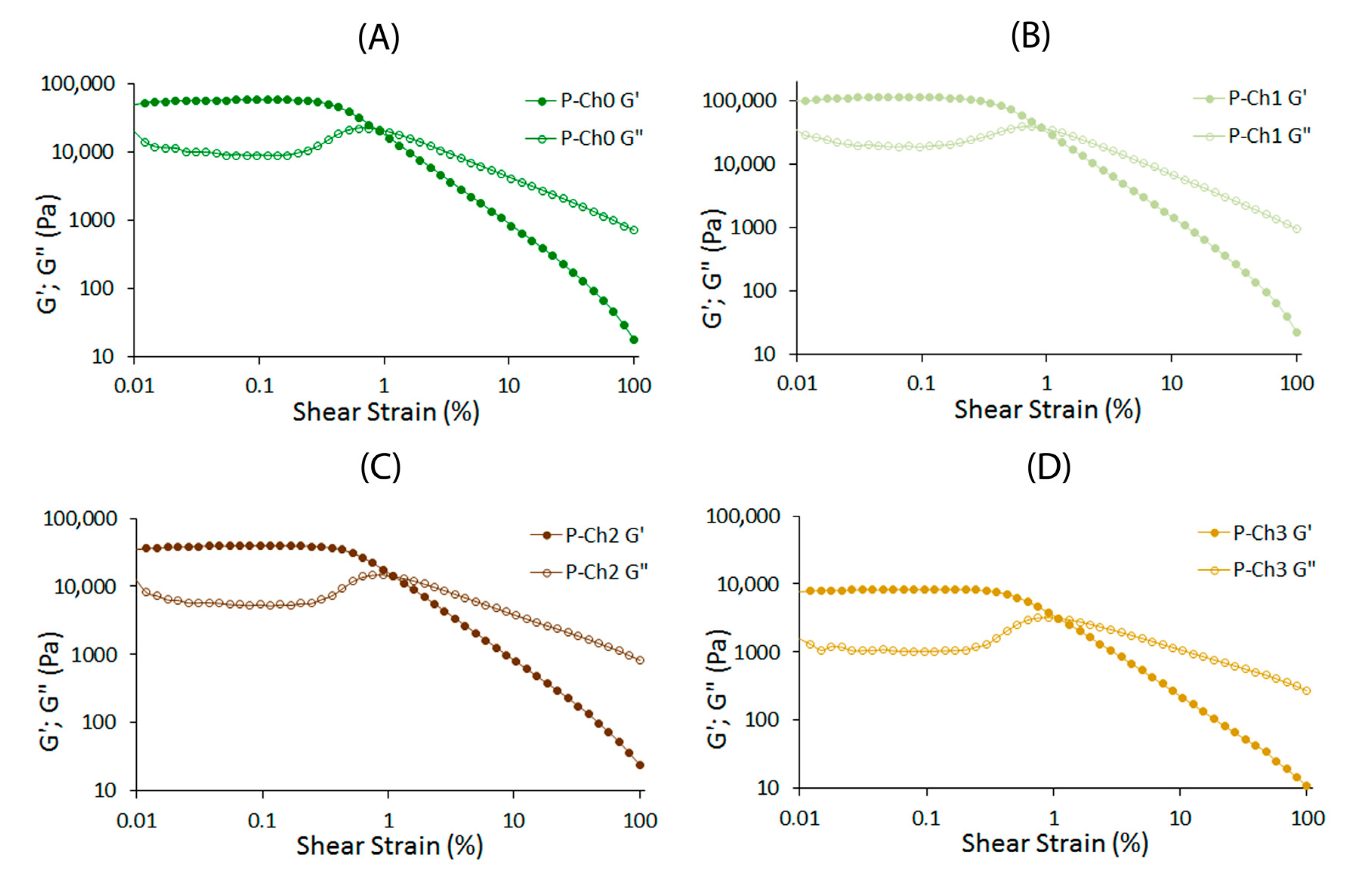










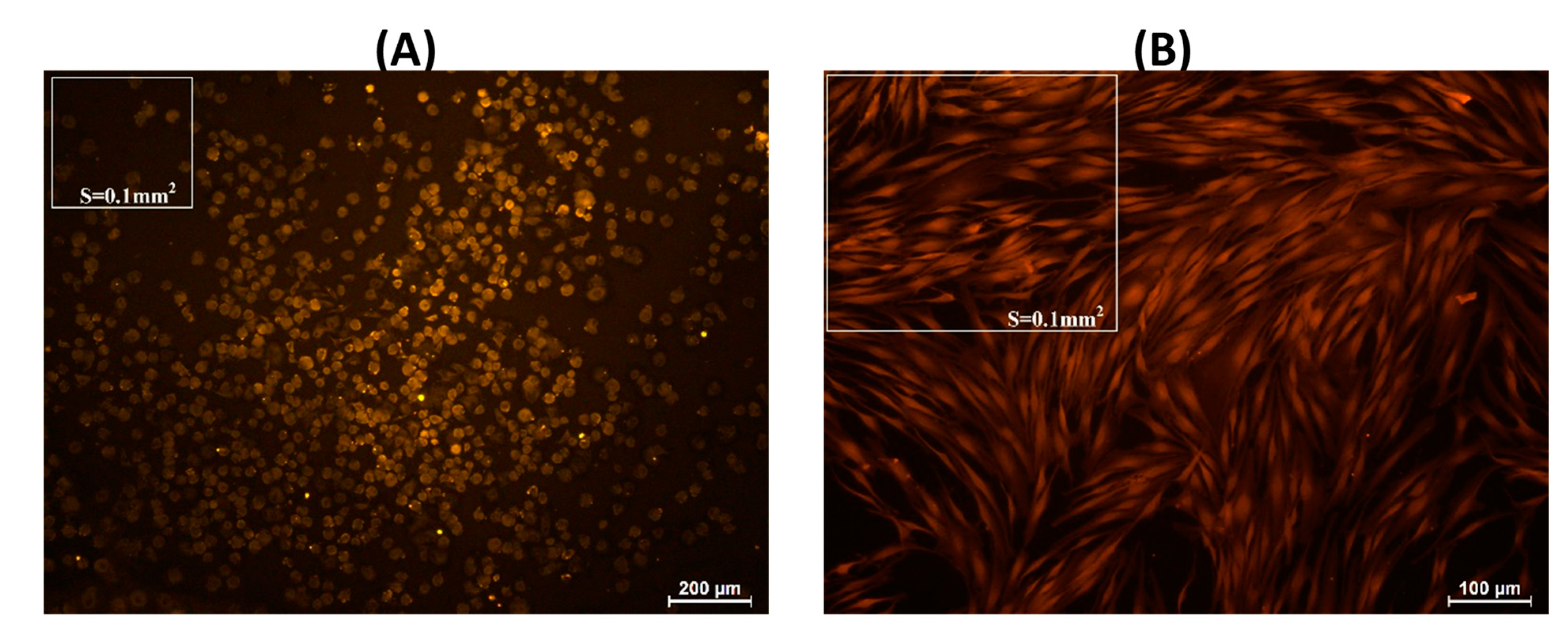
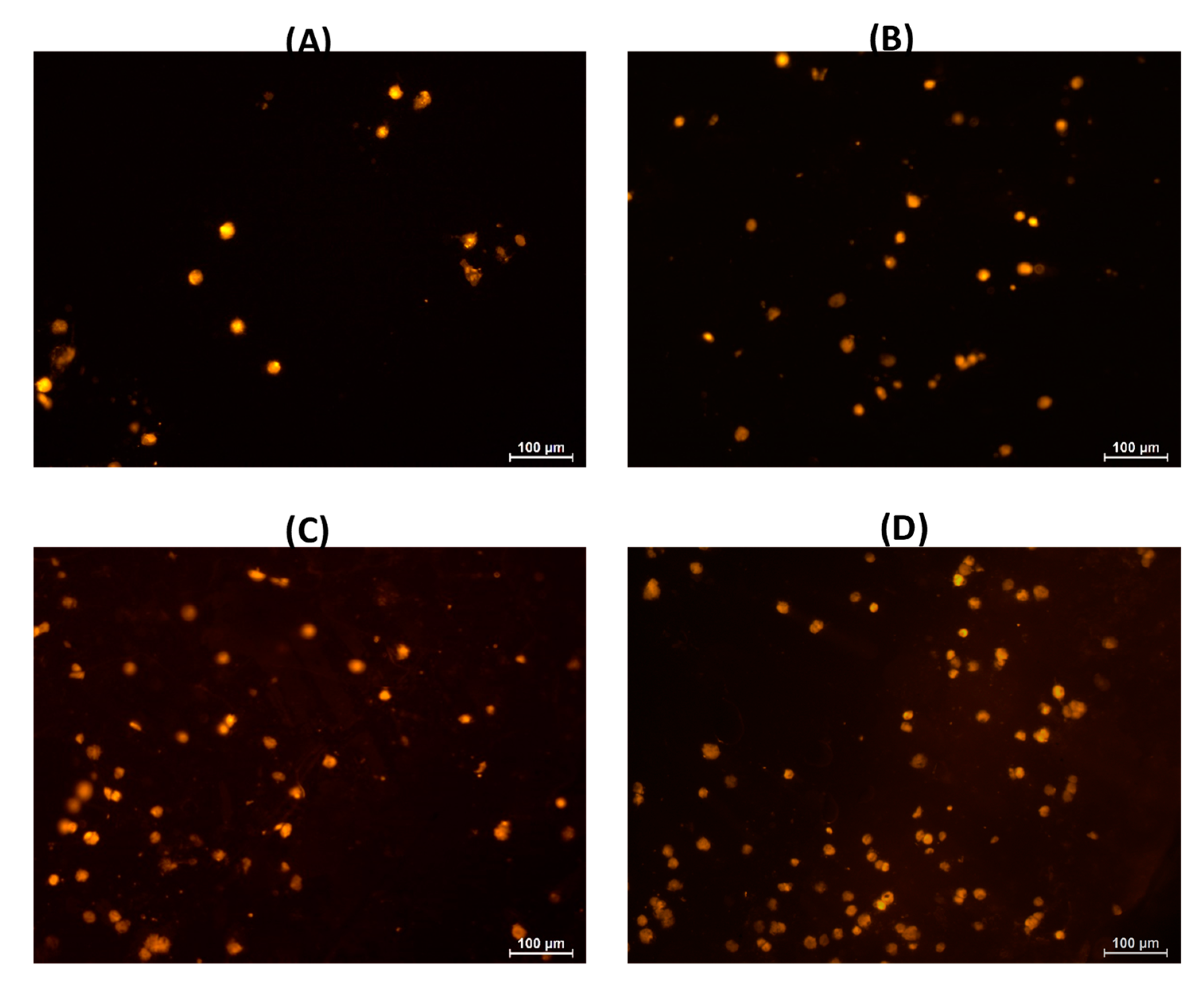
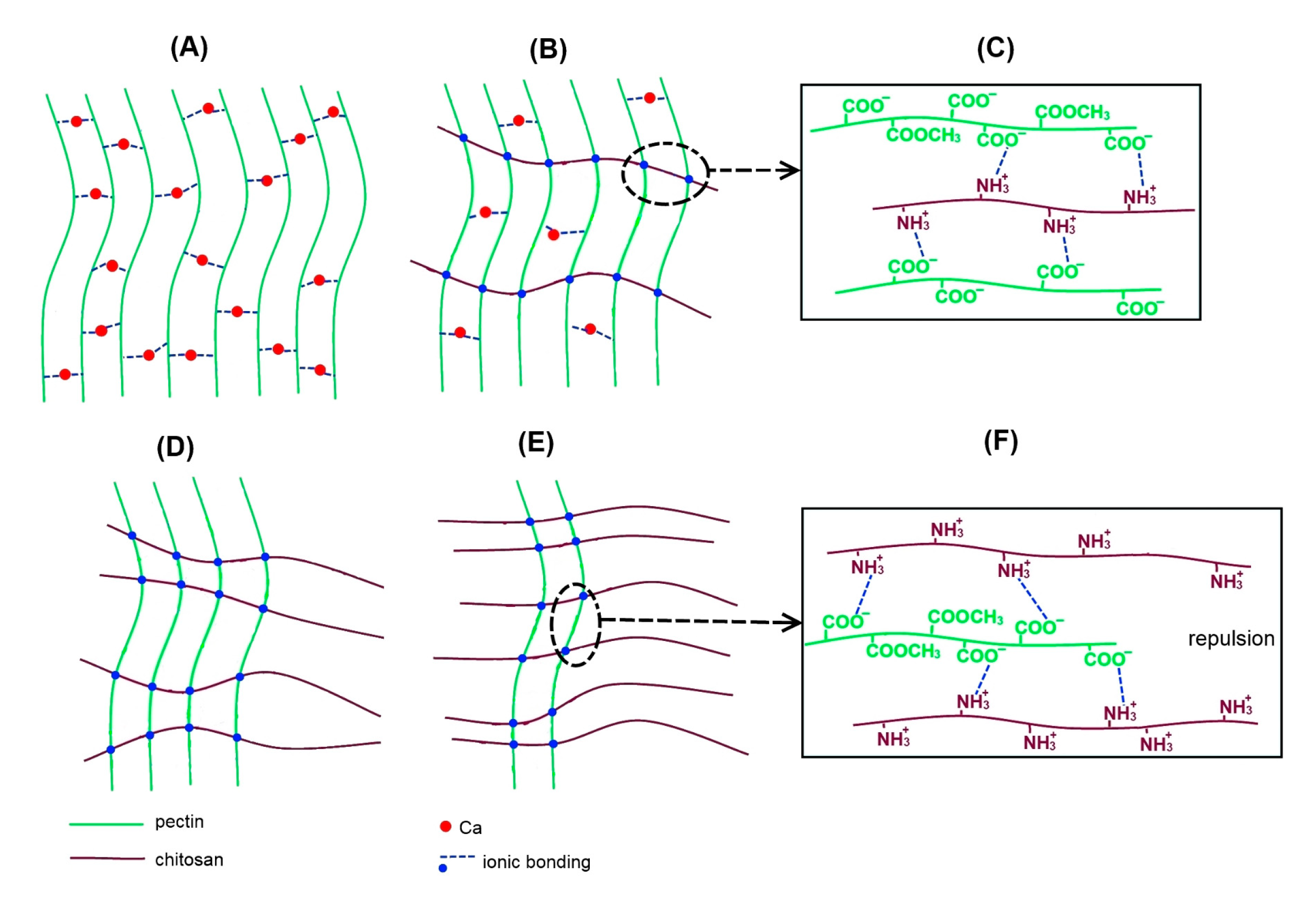
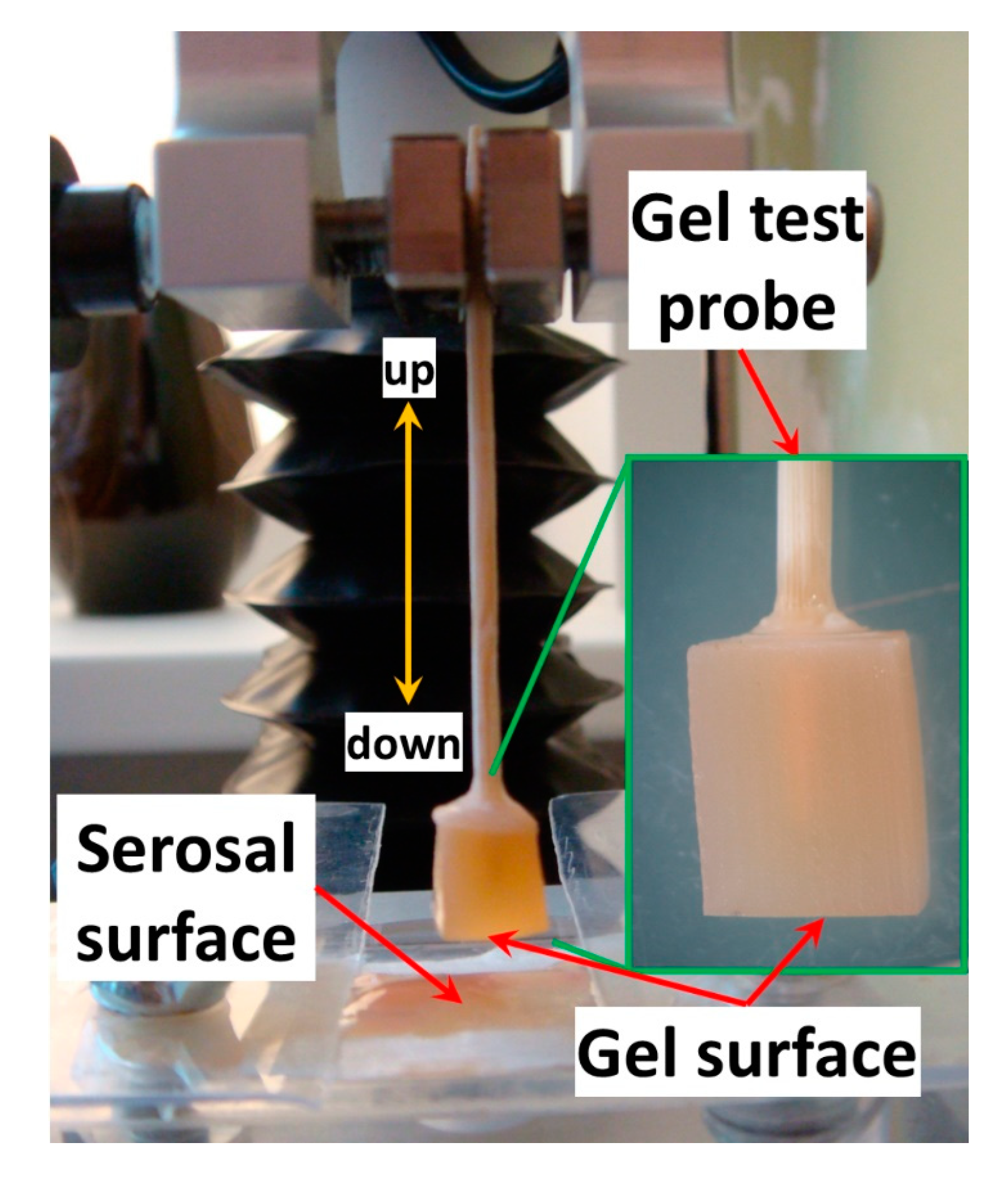
| Gel Sample | Density (g/cm3) | Water Content (%) | pH | Hardness (N) | Elasticity (mm) | Young’s Modulus (kPa) |
|---|---|---|---|---|---|---|
| P–Ch0 | 1.04 ± 0.05 a | 94.3 ± 0.2 a | 3.99 ± 0.01 a | 1.11 ± 0.06 a | 1.5 ± 0.2 a | 2919 ± 324 a |
| P–Ch1 | 1.03 ± 0.07 a | 94.0 ± 0.1 b | 3.54 ± 0.06 b | 3.27 ± 0.14 b | 2.6 ± 0.2 b | 4341 ± 488 b |
| P–Ch2 | 1.05 ± 0.08 a | 95.2 ± 0.1 c | 3.03 ± 0.03 c | 1.68 ± 0.12 c | 1.8 ± 0.1 c | 3169 ± 420 a |
| P–Ch3 | 1.04 ± 0.05 a | 97.4 ± 0.1 d | 3.47 ± 0.04 b | 0.42 ± 0.06 d | 1.9 ± 0.2 c | 781 ± 127 c |
| Parameters | P–Ch0 | P–Ch1 | P–Ch2 | P–Ch3 |
|---|---|---|---|---|
| G′LVE (Pa) | 56,286 ± 2324 a | 109,213 ± 5170 b | 38,438 ± 1365 c | 8159 ± 149 d |
| G″LVE (Pa) | 10,660 ± 2647 a | 22,455 ± 4688 b | 6319 ± 1852 c | 1124 ± 138 d |
| G*LVE | 57,399 ± 1576 a | 111,755 ± 4130 b | 39,014 ± 991 c | 8240 ± 125 d |
| Tan [δ]LVE | 0.19 ± 0.06 a, c | 0.21 ± 0.05 a | 0.17 ± 0.06 ac | 0.14 ± 0.02 b, c |
| γL (%) | 0.36 ± 0.00 a | 0.31 ± 0.05 b | 0.42 ± 0.03 c | 0.39 ± 0.04 c |
| τL (Pa) | 50,774 ± 6348 a | 101,361 ± 29,599 b | 35,050 ± 3432 c | 7494 ± 995 d |
| τFr (Pa) | 21,900 ± 3359 a | 39,952 ± 10,169 b | 14,835 ± 1550 c | 3183 ± 296 d |
| γFr | 0.84 ± 0.14 a | 0.82 ± 0.19 a | 1.10 ± 0.00 b | 1.08 ± 0.15 b |
| G*FP (Pa) | 31,661 ± 5293 a | 55,867 ± 14,392 b | 20,104 ± 2052 c | 4483 ± 443 d |
| G*max/G*LVE | 1.02 ± 0.01 a, c | 1.06 ± 0.06 a | 0.99 ± 0.03 a, c | 0.99 ± 0.02 b, c |
| Tan [δ]AF | 0.36 ± 0.06 a, b | 0.47 ± 0.10 a | 0.31 ± 0.04 a, b | 0.28 ± 0.04 a, b |
| Parameters | P–Ch0 | P–Ch1 | P–Ch2 | P–Ch3 | ||
|---|---|---|---|---|---|---|
| k′ (Pa × s) | 56,226 ± 9345 a | 113,473 ± 10,527 b | 36,166 ± 2949 c | 7459 ± 470 d | ||
| k″ (Pa × s) | 7532 ± 1401 a | 15,675 ± 991 b | 4730 ± 280 c | 979 ± 49 d | ||
| A | 56,574 ± 9651 a | 113,440 ± 10,571 b | 35,560 ± 2809 c | 7497 ± 485 d | ||
| k″/k′ | 7.50 ± 0.37 a | 7.23 ± 0.36 a | 7.64 ± 0.29 a | 7.62 ± 0.26 a | ||
| η × s | 8949 ± 1546 a | 17,966 ± 1636 b | 5690 ± 469 c | 1194 ± 83 d | ||
| n′ | 0.10 ± 0.00 a | 0.10 ± 0.01 ab | 0.09 ± 0.01 b, c | 0.08 ± 0.02 c | ||
| n″ | 0.05 ± 0.01 a | 0.04 ± 0.01 b | 0.01 ± 0.01 c | 0.01 ± 0.01 c | ||
| z | 9.5 ± 0.4 a | 9.5 ± 1.3 a | 10.2 ± 1.3 a | 13.6 ± 5.2 a | ||
| Frequency (Hz) | 0.54 | G′ (kPa) | 51,285 ± 8065 a | 102,928 ± 22,977 b | 32,858 ± 5877 c | 7035 ± 480 d |
| G″ (kPa) | 10,678 ± 2588 a | 11,106 ± 2249 b | 3046 ± 660 c | 996 ± 43 d | ||
| 1.11 | G′ (kPa) | 58,050 ± 9752 a | 115,778 ± 10,950 b | 37,197 ± 2761 c | 7494 ± 964 d | |
| G″ (kPa) | 8237 ± 1719 a | 17,779 ± 1534 b | 4569 ± 336 c | 491 ± 72 d | ||
| 10.50 | G′ (kPa) | 72,130 ± 12,716 a | 145,137 ± 10,660 b | 44,835 ± 4858 c | 9034 ± 428 d | |
| G″ (kPa) | 8390 ± 1545 a | 16,897 ± 896 b | 3019 ± 253 c | 1044 ± 51 d | ||
| 30.60 | G′ (kPa) | 79,186 ± 13,834 a | 157,555 ± 12,243 b | 47,215 ± 5114 c | 9416 ± 1157 d | |
| G″ (kPa) | 9105 ± 1806 a | 18,833 ± 1557 b | 3444 ± 369 c | 967 ± 61 d | ||
| 50.00 | G′ (kPa) | 80,275 ± 14,949 a | 159,040 ± 17,820 b | 46,967 ± 5666 c | 8924 ± 3431 d | |
| G″ (kPa) | 10,435 ± 5166 a | 21,584 ± 11,068 b | 7550 ± 2878 c | 893 ± 446 d | ||
| Parameters | Viscosity | ||||
|---|---|---|---|---|---|
| Kc (Pa × s) | R2 | n | ηapp 10 (Hz) | ηapp 50 (Hz) | |
| P–Ch0 | 8951 | 0.999 | −0.895 | 1099 ± 164 a | 263 ± 48 a |
| P–Ch1 | 17,972 | 0.999 | −0.896 | 2212 ± 161 b | 521 ± 59 b |
| P–Ch2 | 5687 | 0.998 | −0.913 | 682 ± 46 c | 154 ± 24 c |
| P–Ch3 | 1190 | 0.998 | −0.935 | 138 ± 7 d | 29 ± 11 d |
| Gel Sample | Hardness (N) | Elasticity (mm) | Young’s Modulus (kPa) |
|---|---|---|---|
| pH 5.0 | |||
| P–Ch0 | 0.26 ± 0.21 a | 1.0 ± 0.2 a | 652 ± 316 a |
| P–Ch1 | 1.69 ± 0.43 b | 1.9 ± 0.2 b | 3930 ± 643 b |
| P–Ch2 | 1.59 ± 0.16 b | 2.3 ± 0.1 c | 2569 ± 211 c |
| P–Ch3 | 0.37 ± 0.08 a | 2.4 ± 0.2 c | 552 ± 91 a |
| pH 7.4 | |||
| P–Ch0 | 0.22 ± 0.12 a | 1.0 ± 0.2 a | 613 ± 239 a |
| P–Ch1 | 1.91 ± 0.40 b | 2.3 ± 0.3 b | 3247 ± 705 b |
| P–Ch2 | 2.70 ± 0.50 c | 3.2 ± 0.2 c | 2490 ± 539 c |
| P–Ch3 | 0.79 ± 0.10 d | 3.4 ± 0.4 c | 562 ± 126 a |
| pH 8.0 | |||
| P–Ch0 | 0.32 ± 0.21 a | 1.0 ± 0.2 a | 873 ± 460 a |
| P–Ch1 | 0.80 ± 0.23 b | 2.2 ± 0.2 b | 1198 ± 203 a |
| P–Ch2 | 1.46 ± 0.42 c | 2.7 ± 0.3 c | 1415 ± 465 b |
| P–Ch3 | 0.75 ± 0.12 b | 2.6 ± 0.2 c | 488 ± 93 c |
| Gel Sample | Incubation 2 h | Incubation 24 h | ||
|---|---|---|---|---|
| Adhesion (cells/0.1 mm2) | Cell Size (μm) | Adhesion (cells/0.1 mm2) | Cell Size (μm) | |
| Control | 52.4 ± 9.2 a | 27 ± 2 a | 59.1 ± 4.2 a | 101 ± 19 a,* |
| P–Ch0 | 20.6 ± 5.6 b, c | 25 ± 2 a | 5.6 ± 0.9 b,* | 32 ± 8 b |
| P–Ch1 | 24.2 ± 9.3 b | 24 ± 4 a | 12.1 ± 0.8 c,* | 24 ± 4 b |
| P–Ch2 | 15.5 ± 2.1 c | 28 ± 2 a | 19.9 ± 2.3 d,* | 29 ± 5 b |
| P–Ch3 | 18.0 ± 3.6 b, c | 26 ± 2 a | 25.9 ± 2.5 e,* | 23 ± 6 b |
| Gel | Apple Pectin (wt/v%) | Chitosan (wt/v%) |
|---|---|---|
| P-G0 | 4 | - |
| P-G1 | 3 | 1 |
| P-G2 | 2 | 2 |
| P-G3 | 1 | 3 |
Disclaimer/Publisher’s Note: The statements, opinions and data contained in all publications are solely those of the individual author(s) and contributor(s) and not of MDPI and/or the editor(s). MDPI and/or the editor(s) disclaim responsibility for any injury to people or property resulting from any ideas, methods, instructions or products referred to in the content. |
© 2023 by the authors. Licensee MDPI, Basel, Switzerland. This article is an open access article distributed under the terms and conditions of the Creative Commons Attribution (CC BY) license (https://creativecommons.org/licenses/by/4.0/).
Share and Cite
Popov, S.; Paderin, N.; Chistiakova, E.; Ptashkin, D.; Vityazev, F.; Markov, P.A.; Erokhin, K.S. Effect of Chitosan on Rheological, Mechanical, and Adhesive Properties of Pectin–Calcium Gel. Mar. Drugs 2023, 21, 375. https://doi.org/10.3390/md21070375
Popov S, Paderin N, Chistiakova E, Ptashkin D, Vityazev F, Markov PA, Erokhin KS. Effect of Chitosan on Rheological, Mechanical, and Adhesive Properties of Pectin–Calcium Gel. Marine Drugs. 2023; 21(7):375. https://doi.org/10.3390/md21070375
Chicago/Turabian StylePopov, Sergey, Nikita Paderin, Elizaveta Chistiakova, Dmitry Ptashkin, Fedor Vityazev, Pavel A. Markov, and Kirill S. Erokhin. 2023. "Effect of Chitosan on Rheological, Mechanical, and Adhesive Properties of Pectin–Calcium Gel" Marine Drugs 21, no. 7: 375. https://doi.org/10.3390/md21070375
APA StylePopov, S., Paderin, N., Chistiakova, E., Ptashkin, D., Vityazev, F., Markov, P. A., & Erokhin, K. S. (2023). Effect of Chitosan on Rheological, Mechanical, and Adhesive Properties of Pectin–Calcium Gel. Marine Drugs, 21(7), 375. https://doi.org/10.3390/md21070375






